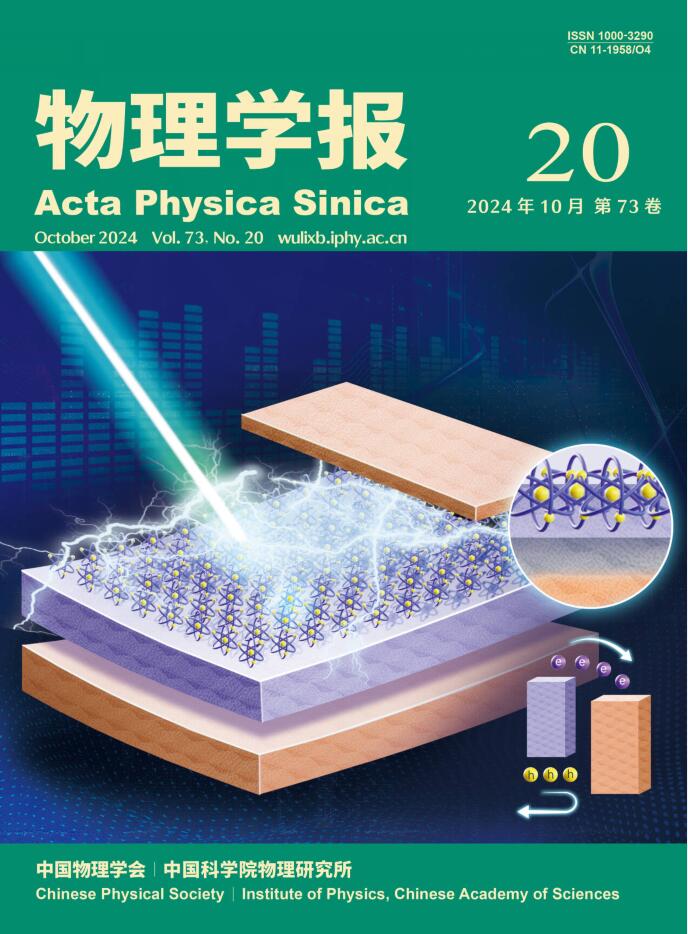点阵QCD数据的虚部分布及信号改进
IF 0.8
4区 物理与天体物理
Q3 PHYSICS, MULTIDISCIPLINARY
引用次数: 0
摘要
理解晶格观测值在规范结构上的统计波动在理论和实践上都是重要的。它为解决著名的信号噪声问题和符号问题提供了物理见解,并激发了开发改进晶格计算信号方法的新思路。在许多努力中,探索格数值结果的实部和虚部之间的联系是了解格信号和误差的一种新方法,因为实部和虚部都来自规范场的相同采样,并且它们在规范样本上的分布原则上是相关的。具体来说,通过分析具有高统计量和非零动量的淬灭点阵两点函数的实部和虚部分布,本文提出了连接这两个分布的一个可能的定量公式:R(x) =∫dyS(y - x) [I(y)K(y)],其中R(x)表示实部分布,I(x)表示虚部分布,S(x)表示底层信号分布,K(Ux)是规范场的核函数。这个理论假设是普遍有效的,因为核函数包含了决定所有分布的规范场信息。通过计算实部和核函数修正虚部的非平凡统计相关性,并对核函数作进一步的假设,对公式进行了数值验证。发现K(Ux) = 1的大部分naïve猜测都不成立,这导致没有统计学上显著的相关性。同时,假设K(Ux)只是一个符号函数,可以产生~ 70%的相关性。然后,在虚部的绝对值上加入不同强度的随机扭曲,结果表明,即使是很小的扭曲,比如1%,也会使实部和虚部之间的相关性降低到50%以下。这基本上证明了观察到的~ 70%的相关性是非常重要的,K(Ux)是一个符号函数的假设至少抓住了幕后的一些物理机制。利用这种相关性,晶格结果的方差可以提高约40%。这在实践中并不是一个显著的进步;然而,本研究提供了一种创新的策略来理解晶格QCD中统计不确定性的来源,并提高了晶格计算中的信噪比。利用机器学习的力量对各种更精确的格数据进行进一步的研究,有望对核函数的形式提供更好的指示和约束。本文章由计算机程序翻译,如有差异,请以英文原文为准。
The Imaginary-Part Distribution of Lattice QCD Data and Signal Improvement
Understanding the statistical fluctuations of lattice observables over the gauge configurations is important both theoretically and practically. It provides physical insights to tackle the famous signal-to-noise problem and the sign problem, and inspires new thoughts in developing methodologies to improve the signal of lattice calculations. Among many efforts, exploring the connections between the real and imaginary parts of lattice numerical results is a novel way to learn about the lattice signal and error, since both the real and imaginary parts originate from the same sampling of gauge fields and their distributions over the gauge samples are in principle related. Specifically, by analyzing the distributions of the real and imaginary parts of quenched lattice two-point functions with high statistics and non-zero momentum, this work proposes a possible quantitative formula connecting these two distributions as R(x) = ∫dyS(y - x) [I(y)K(Uy)], where R(x) stands for the real-part distribution, I(x) the imaginary-part distribution, S(x) the underlying signal distribution and K(Ux) a kernel function of the gauge field. This theoretical assumption is of general validity since the kernel function contains the gauge field information that determines all the distributions. The formula is numerically verified by calculating the non-trivial statistical correlations of the real parts and the kernel-function-modified imaginary parts with further assumptions on the kernel function. It is found that the most naïve guess of K(Ux) = 1 does not work, which leads to no statistically significant correlation. Meanwhile, the assumption that K(Ux) is only a sign function works well, giving rise to ~ 70% correlation. Then, random distortions on the absolute values of the imaginary parts are added with different strength and the results show that even a small distortion, say 1%, would reduce the correlation between the real and imaginary parts down to less than 50%. This essentially proves that the observed ~ 70% correlation is highly non-trivial and the hypothesis of K(Ux) being a sign function captures at least some of the physical mechanisms behind the scenes. Employing this correlation, the variance of lattice results can be improved by around 40%. It is not a significant improvement in practice; however, this study offers an innovative strategy to understand the source of statistical uncertainties in lattice QCD and to improve the signal-to-noise ratios in lattice calculations. Further studies utilizing the power of machine learning on a variety of more precise lattice data will hopefully give better indication and constraint on the form of the kernel function.
求助全文
通过发布文献求助,成功后即可免费获取论文全文。
去求助
来源期刊

物理学报
物理-物理:综合
CiteScore
1.70
自引率
30.00%
发文量
31245
审稿时长
1.9 months
期刊介绍:
Acta Physica Sinica (Acta Phys. Sin.) is supervised by Chinese Academy of Sciences and sponsored by Chinese Physical Society and Institute of Physics, Chinese Academy of Sciences. Published by Chinese Physical Society and launched in 1933, it is a semimonthly journal with about 40 articles per issue.
It publishes original and top quality research papers, rapid communications and reviews in all branches of physics in Chinese. Acta Phys. Sin. enjoys high reputation among Chinese physics journals and plays a key role in bridging China and rest of the world in physics research. Specific areas of interest include: Condensed matter and materials physics; Atomic, molecular, and optical physics; Statistical, nonlinear, and soft matter physics; Plasma physics; Interdisciplinary physics.
 求助内容:
求助内容: 应助结果提醒方式:
应助结果提醒方式:


